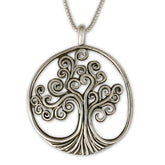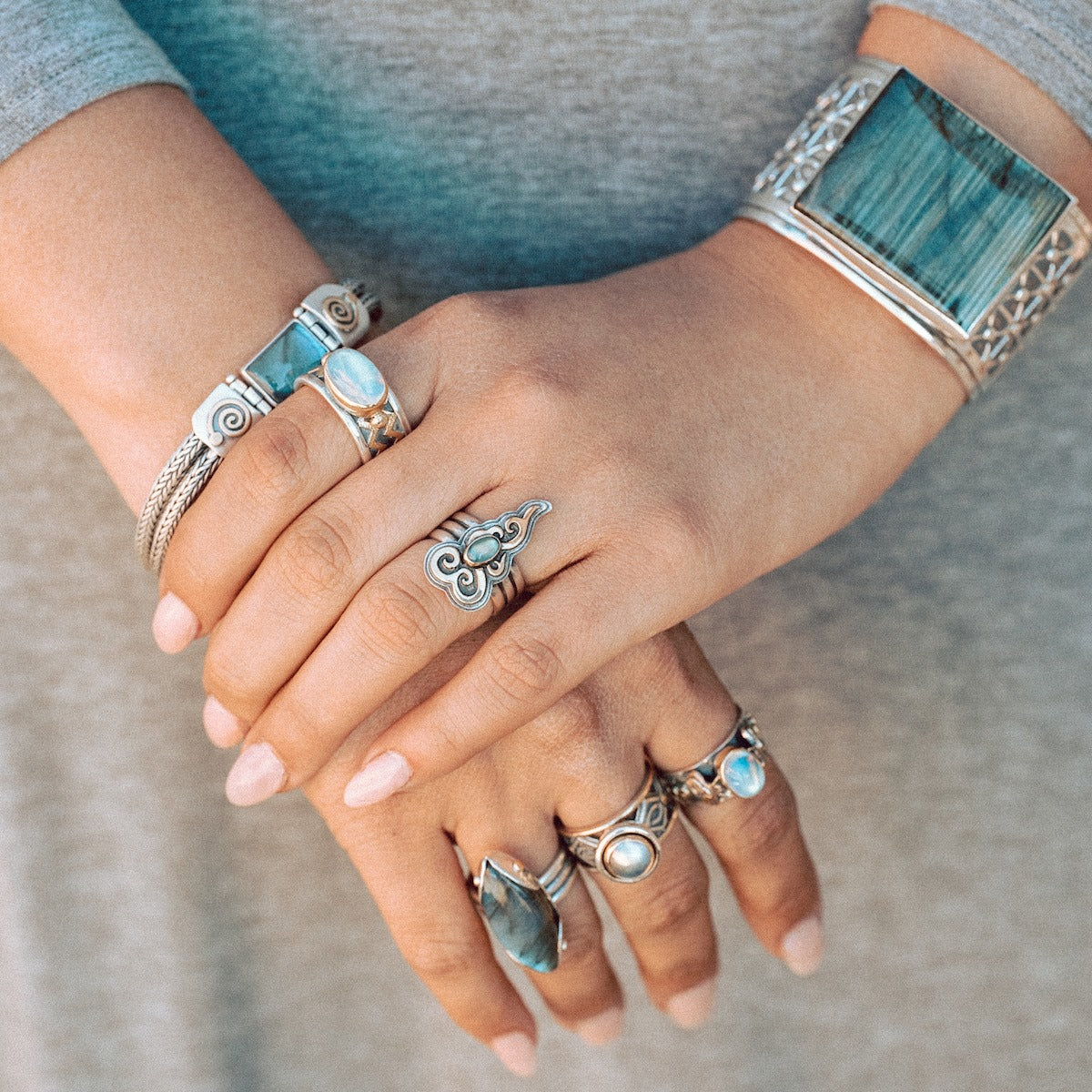October - Opal
 Long, long ago, when the earth was young and elements were divine, the Storm God lolled about, playing amidst the wind and clouds in his luminous sphere. The rain came down in sheets, whipped through the sky, pelting the earth. Amid the lightning strikes, with black clouds riding the mountains and plains like emboldened dragons, the sunlight broke through the darkness. A rainbow appeared. The storm god grew angry and jealous of the rainbow's power. In a moment, he petrified it. Pieces of rainbow fell to the earth, becoming opals.
Long, long ago, when the earth was young and elements were divine, the Storm God lolled about, playing amidst the wind and clouds in his luminous sphere. The rain came down in sheets, whipped through the sky, pelting the earth. Amid the lightning strikes, with black clouds riding the mountains and plains like emboldened dragons, the sunlight broke through the darkness. A rainbow appeared. The storm god grew angry and jealous of the rainbow's power. In a moment, he petrified it. Pieces of rainbow fell to the earth, becoming opals.
Flash forward several tens of million of years into the fifteenth century. Imagine in another life time that you were a blond maiden. You were traveling through Cernowitz, Hungary where a community of about three hundred miners was mining for opals. You purchased one for a necklace. It would not only make you quite the fashionable rage, but give you talismanic power to protect the lovely color of your hair.
The name of October's birthstone comes from the Sanskrit word "upala," which simply translates to "precious gem." From the Sanskrit came the Greek word, opalios, and the Latin, opalus. October's birthstone suggests the turn of leaves, gold, yellow, red, in the autumn months. I believe there is no gem more exquisite than a fine opal, and yet many people are reluctant to own one because they are believed to bring bad luck.
Opals are fragile and brittle. Many an opal has cracked on a jewelers' bench during the setting. Jewelers have helped to perpetuate the myth and discourage opals because, when you crack a valuable gem on the bench, you naturally blame it on bad luck and not your own skill set. In Arab myth and lore opals were held to be created when lightening strikes the earth. When lightening strikes sand, glass is formed. Like glass, opals are extremely brittle and fragile.
The second origin of opals being bad luck comes from the notion of the evil eye. Lapidaries in Europe in the Middle Ages call the gem, ophthalmios, "eye stone." The eye of a dragon. or any malignant god was said to be bad luck. A Scandinavian story Volondr, the equivalent of the Roman god, Vulcan, described another source of opals. He was said to have created them from the eyes of children.
The notion of the evil eye is widely held. The evil eye can seduce, which is why you should take care when you see the eyes in peacock feathers. I recently traveled through Turkey where glass charms are sold, concentric circles with a dark spot in the center, said to ward off the evil eye. In an ancient cavern with Roman columns under the streets of Istanbul was a column with a Medusa carving. The origin of this "evil eye," I was told, was the ancient story of this snake headed demon goddess that turned heroes into stone—something many men have experienced with their wives, metaphorically speaking, of course.
In these cultures, to have oneself cast by an evil implies far more than sleeping in separate beds. Eyes, being the "windows of the soul," give access to one's essence. Perhaps to be given the evil eye implies a kind of stain on one's immortal divinity, which translate, in Hamlet's words, to bad luck while in the day to day slings and arrows of outrageous fortune. Certainly many of us have experienced a sinking feeling in our stomachs after being glanced by someone who had malignant intent.
Yet opals were also held in high esteem. One gem, called the Orphanus, was set in a crown of the Holy Roman Empire. Said to glow with inner fire in the darkness, the opal represented the empire's regal honor. Opals were used as the eyes of deities. The Roman's knew opals as "cupid stone," symbolic of purity and hope.
These stories suggest the true power of opals deals with a kind of visioning. Going back to the original story, the rainbow is metaphor for purity and blessing. At the end of the rainbow is the pot of gold—gold being the final alchemical process, the manifestation of one's own divinity. Rainbows also are about understanding something from many different perspectives.
Opals contain the full color range. The view of orange is different than the view of blue or green. A rainbow is white light broken into various hues. Some esoteric traditions hold that colors represent the various qualities of souls. Shamanic practitioners in the Americas and Australia have used opals as a type of medicine that enables clarity.
Perhaps opals enable you to dream a different vision of your life, one based on the universal perspective of the rainbow. While this path may not make you popular, it certainly will give you the satisfaction and radiance of fulfilling your inner duty.
Browse our Opal Jewelry collection at https://celticjewelry.com/collections/opal-october
References: Most of the historical content, myth and lore referenced in this article came from two books, both of which are in print and available on line:
George Frederick Kunz, The Curious Lore of Precious Stones, New York; Dover Publications, Inc. 1913, 1971 edition.
Bruce Knuth, Gems In Myth, Legends And Lore, Parachute, Colorado, Jewelers Press, 2007.







